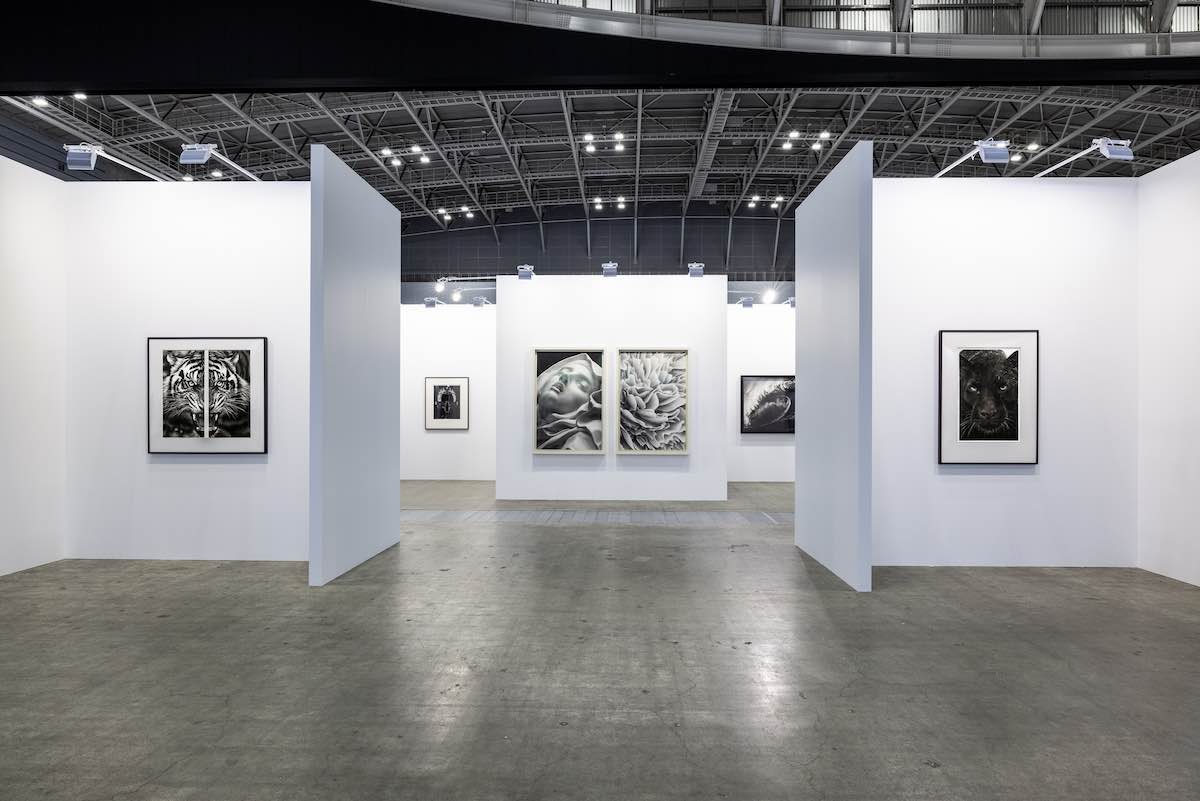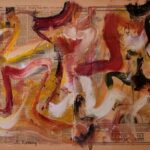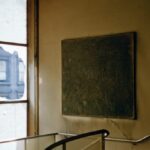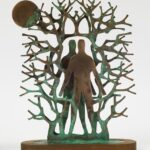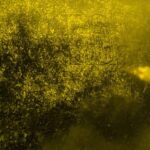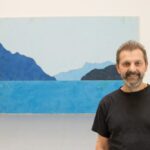Editor’s Note: This story originally appeared in Breakfast With ARTnews, our daily newsletter about the art world. Sign up here to receive it every weekday.
References: this article is based on content originally published by
Sarah Douglas on ARTnew. You can read the full article here.
While the VIP preview Thursday of Tokyo Gendai’s second edition brought healthy buzz—along with major collectors like Takeo Obayashi, Shunji and Asako Oketa, Yoshiko Mori, Jenny Wang and Simian Wang—the atmosphere on Friday was more subdued. ARTnews took the opportunity to ask galleries how their sales had been so far.
References: this article is based on content originally published by
Sarah Douglas on ARTnew. You can read the full article here.
Two brand-name galleries with Tokyo branches saw robust sales. By the middle of day two, mega-gallery Pace Gallery, a newcomer to the fair that did a soft opening for its new Tokyo space this week, either sold or had on strong reserve all eight works they were showing by Robert Longo, at prices ranging from $90,000 to $750,000. (All the works were going to local collections.) Meanwhile, Los Angeles’s BLUM, which has spaces in New York and Tokyo, sold a Ha Chong-Hyun painting for $250,000, a work on paper by Yoshitomo Nara for $180,000, a Kenjiro Okazaki painting for $160,000, and ceramics by Kazunori Hamana and Yuji Ueda for $20,000 each, among other pieces.
References: this article is based on content originally published by
Sarah Douglas on ARTnew. You can read the full article here.
Tokyo’s ShugoArts sold two Lee Kit works, priced in the range of $30,000. Another Tokyo gallery, Anomaly, had sold out almost all of their works by Yusuke Asai, though the gallery declined to give prices.
References: this article is based on content originally published by
Sarah Douglas on ARTnew. You can read the full article here.
BLUM founder Tim Blum told ARTNews that the fair seemed more or less the same as last year, but Taku Sato, director of Tokyo gallery Parcel, another returnee to the fair, had a less positive impression. “Compared to last year, as my expectations were not that high, I think so far [the second edition] is good,” Sato said. “However, I do feel there were more people from abroad last year than this year, and more institutional curators last year.” Parcel is showing large works by Tomonari Hashimoto. So far, numerous smaller pieces by Hashimoto have sold, ranging from $3,000 to $5,000, some going into notable private collections in Japan.
References: this article is based on content originally published by
Sarah Douglas on ARTnew. You can read the full article here.
There tend not to be million-dollar plus artworks at Tokyo Gendai. The $750,000 Longo at Pace’s booth appeared to represent the upper end of things. Most top works were selling in the up-to-$300,000 range, as is the case for all of Art Assembly’s fairs, co-founder Magnus Renfrew told ARTnews on Friday. (For what it’s worth, he pointed out, although fairs like Art Basel Hong Kong may have works that go higher in price, most works that sell tend to be in a similar same range.)
References: this article is based on content originally published by
Sarah Douglas on ARTnew. You can read the full article here.
Renfrew cautioned against taking any sales results thus far as the final word: there is a strong work ethic in Japan, and for that reason many collectors tend to come to the fair, and buy, on the weekend.
References: this article is based on content originally published by
Sarah Douglas on ARTnew. You can read the full article here.
“There’s a lot of collectors that won’t come during the week who will come on Saturday and Sunday. And we know someone personally who are doing that,” he said. According to conversations Renfrew said he was having with participating galleries, “most of them have been having good conversations and many have sold artworks,” though results among them were uneven, with some still awaiting sales.
References: this article is based on content originally published by
Sarah Douglas on ARTnew. You can read the full article here.
One noted collector missing from the festivities was young mega-collector Yusaku Maezawa, who, according to dealers, usually likes to confirm his purchases in person. The director of his foundation was, however, one of the first to arrive when the fair opened its VIP preview on Thursday.
References: this article is based on content originally published by
Sarah Douglas on ARTnew. You can read the full article here.
While some have hoped that a weak yen right now might encourage foreign collectors to travel, as ARTnews Karen K. Ho reported earlier this week, there was not a large contingent of collectors from the United States or Europe. However, that’s not really this fair’s brief. Renfrew is more focused on attracting collectors from the region. He did, however, say, “In an ideal world, we would want to be able to attract a wider audience from around the world, and I think that there could be the potential to do that.”
References: this article is based on content originally published by
Sarah Douglas on ARTnew. You can read the full article here.
The July date for the fair, he admitted, when weather in Tokyo is extremely hot and humid, is a hindrance and spring and autumn tend to be more attractive for US and European visitors. (For what it’s worth, the weather right now isn’t the only obstacle. There are events in more attractive climes. Paris’s Almine Rech may be manning a booth in Tokyo, but the gallery opened a branch in Monaco’s Carré d’Or district, and is participating in the sixth edition of Monaco Art Week, which runs July 2 to July 7, precisely the same dates as Tokyo Gendai.)
References: this article is based on content originally published by
Sarah Douglas on ARTnew. You can read the full article here.
“The priority for us is to ensure that we’re delivering a really strong Japanese audience of existing collectors in the art community and curators and museum directors, then to be broaden the audience within Japan through this kind of focal point,” Renfrew said. “And then regional attendance, from the core constituencies within the natural catchment area, which is mainland China, Korea, Taiwan, and Hong Kong. Then we build up from there.”
References: this article is based on content originally published by
Sarah Douglas on ARTnew. You can read the full article here.
When I brought up the recent changes in the art market in the West, where speculators are fleeing as prices for young hot artists correct, Renfew said, “We’re really keen to try and build the market for the long term. We’re not interested in a flash in the pan.” He then pointed to the wild speculation in Chinese art in 2006-2008.
References: this article is based on content originally published by
Sarah Douglas on ARTnew. You can read the full article here.
“There was an absence of a curatorial critical framework to provide validation [for artworks with] high prices and were on the cover of auction catalogues. After the correction in the Chinese contemporary art market, people became much more aware of that [vacuum].”
References: this article is based on content originally published by
Sarah Douglas on ARTnew. You can read the full article here.
Then came Art HK, of which Renfrew was the first director, from 2007 to 2012, which then became Art Basel Hong Kong, and with it a growth in serious institutions like Hong Kong’s M+. “The first phase was that the fair in Hong Kong was the focal point, with a wide catchment area that required all of the different constituencies [across Asia] to come in, and to have a market that was big enough to sustain the scale and ambition that we set up there.”
References: this article is based on content originally published by
Sarah Douglas on ARTnew. You can read the full article here.
Now, Renfrew said, “we’re in a new phase of the market in Asia, [where] each of those constituencies has grown, and warrants a fair of its own.”
References: this article is based on content originally published by
Sarah Douglas on ARTnew. You can read the full article here.
One question on dealers’ minds as Renfew’s new group of fairs—Tokyo Gendai, Art SG in Singapore, and Taipei Dangdai in Taiwan—matures is how he is connecting them, for instance, by encouraging cross-visitorship. He said that while it is crucial that the fairs maintain their own identity, “One of the interesting things for us is how we will be able to cross promote and cross pollinate, particularly within our VIP network, I think that the fact that we’d have three fairs a year where we’re gaining data for each means that we’re rapidly expanding our VIP database throughout Asia.”
References: this article is based on content originally published by
Sarah Douglas on ARTnew. You can read the full article here.
“Deep roots [in each individual location] and broad branches [across the region], means that we’re in a unique position,” he added.
References: this article is based on content originally published by
Sarah Douglas on ARTnew. You can read the full article here.
Having three fairs each year, Renfrew said, enables him to iterate quickly. “We’re able to experiment a little bit with different initiatives and see what works and what doesn’t work. We can kind of we can fail rapidly on things, so there’s some quite good learnings.”
References: this article is based on content originally published by
Sarah Douglas on ARTnew. You can read the full article here.
I told Renfrew that one dealer had quipped to me that, while Renfrew was fond of pointing to the sheer amount of wealth in a place like Singapore—i.e. note the number of family investment offices there—that didn’t mean that that the wealthy there are in the habit of buying art. “That’s a valid point,” Renfrew said. “Just because there’s money that does not necessarily translate into sales.” His riposte, however, is that you nevertheless need to go where the money is. “No money equals no sales.”
References: this article is based on content originally published by
Sarah Douglas on ARTnew. You can read the full article here.
Fair enough.
References: this article is based on content originally published by
Sarah Douglas on ARTnew. You can read the full article here.
